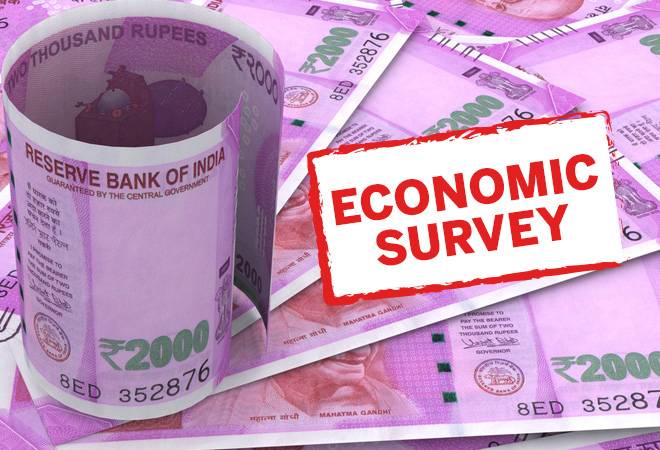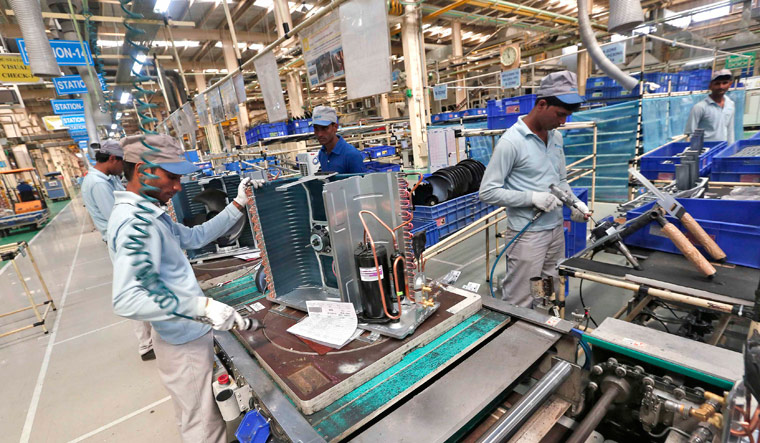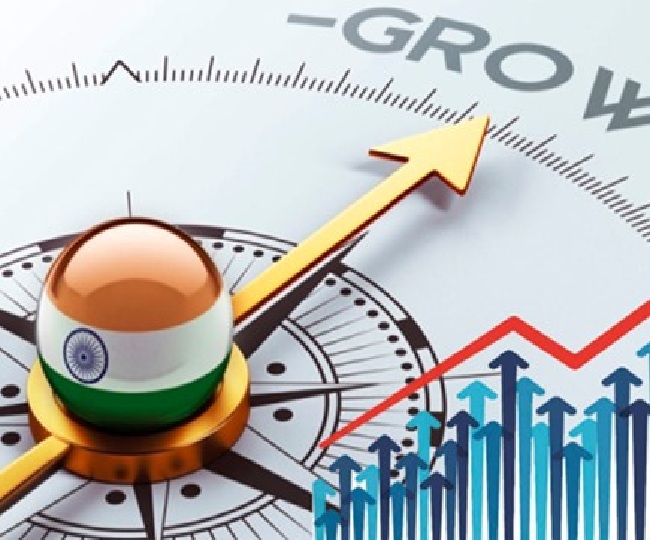The Economic Survey 2020-21 has projected India’s GDP to contract by 7.7 percent, a great fall from the projected 11.5 percent growth over the revised estimated a year before. Though the survey tries to instill hope by giving all sort of logic, all are in a defensive vein as against the last years’ economic survey which was built around India’s aspiration of becoming a $5 trillion economy by 2025, says GYAN PATHAK.
——–
THE Survey estimates real GDP growth for the next fiscal 2021-22 at 11 percent only 0.5 percent less than what was budgeted for the current fiscal.
The survey foresees V-shaped economic recovery supported by a mega vaccination drive, and endeavours to provide an intellectual anchor to the Union Government to be more relaxed about debt and fiscal spending during growth slowdown.
It calls for more active, countercyclical fiscal policies, and emphasises that the situation is “not a call for fiscal irresponsibility”.
The Survey has come at a time when the COVID-19 pandemic has hit all the sectors of the economy in 2020. The worst-hit sectors were contract-based services, manufacturing and construction, and the only sector that shows a silver lining is agriculture.
The survey foresees V-shaped economic recovery supported by a mega vaccination drive, and endeavours to provide an intellectual anchor to the Union Government to be more relaxed about debt and fiscal spending during growth slowdown.
The current account surplus is also expected at 2 percent of the GDP.
Government consumption and net exports have also cushioned growth from diving further. The contraction estimated by the survey is exactly what the CS0 had estimated earlier as against the RBI’s estimate of 7.5 percent. It may also be mentioned here that the RBI has forecast that the first half of 2021-22 may witness a real GDP growth of 14.2 percent.
Many of us might be remembering how the international credit rating organisations had been lowering the credit worthiness of India in the recent past. The survey strongly refutes them by stating that India’s sovereign credit rating doesn’t reflect its fundamentals.



“Never in the history of sovereign credit ratings has the 5th largest economy been rated as the lowest rung of investment grade. India’s fiscal policy must not remain beholden to a noisy, biased measure of India’s fundamentals. India’s forex reserves can cover an additional 2.8 standard deviation negative event. It is imperative that sovereign credit rating methodology be made more transparent, less subjective,” the document emphasises.
The logic is clearly aimed at the critics of the performance of the Modi government, which has been very poor for years, and coupled with mismanagement of finance and policy experiments, had caused a serious downturn in the economy even before the breakout of the pandemic. It was in very bad shape. GDP growth rate had fallen to a decade low to 4.9, and the unemployment rate to over 6 percent at 45 years high. Then came the pandemic and our economy severely impacted which is reflected by the survey report.
The Survey tries its best to put the blame for the badly performing economy entirely on the pandemic and tries to protect the government by telling us that the contraction was pandemic-driven. India will grow now in 2021-22 at the rate of 11 percent of the GDP and the nominal GDP will grow by 15.4 percent.
India must continue to focus on economic growth to lift the poor out of poverty by expanding the overall pie, the report says, which is indeed an indirect acceptance that the government has not been doing what was actually needed.
While dealing with the agriculture sector, the survey says that farm sector reforms in India were overdue and would help create “One India, One Market”. It says that reforms would offer more opportunities to farmers.
However, it says that such work is possible only when “the size of the economic pie grows”. It emphasised the redistributive objectives while calling for “policy focus”.
It has been noted in the survey that healthcare has finally taken the centre state.
The report states that this path would entail a growth in real GDP by 2.4 percent over the absolute level of 2019-20. It implies that the economy would take two years to reach the pre-pandemic level, however, the government would need to play a key role to shape the structure of the healthcare market.
Softening of CPI recently reflects the easing of supply-side constraints that affected food inflation, the report has emphasised. It has been predicted that air passenger travel and aircraft movements would reach a pre-covid level in early 2021.


Private trains may be introduced in 2023-24, the bidding process for which is expected to be completed by May 2021.
There are several other things that create a rosy picture.
The survey gives a very significant warning on the banking sector risks that the country has been facing for quite some time now. It calls for adequate capitalisation of public sector banks, or else lenders may resort to risk-shifting, the report warns, severely impacting the real economic recovery.
“Under-capitalised banks may again resort to risk-shifting and zombie lending, thereby severely exacerbating the problem. The adverse impact could then spill over to the real economy through good borrowers and projects being denied credit. The resultant drop in the investment rate of the economy could then lead to the slowdown of economic growth,” it said.
It may be mentioned here that credit growth is at a record low level, stifling the growth of business and industry. The observation is also important because our industries and business, especially MSMEs, need more money in loans and incentives to overcome the crisis they have been facing.
Many of them are just struggling to survive.
It may be mentioned here that credit growth is at a record low level, stifling the growth of business and industry. The observation is also important because our industries and business, especially MSMEs, need more money in loans and incentives to overcome the crisis they have been facing.
While dealing with the agriculture sector, the survey says that farm sector reforms in India were overdue and would help create “One India, One Market”. It says that reforms would offer more opportunities to farmers. The observation is significant indicating that government is not willing to scrap the three farm laws that the agitating farmers have been demanding, though the government was lately reported to have been willing to put them on hold for one and half years.
It has been noted that only agriculture contributed to positive growth while service and industry contributed to the contraction in GDP.
The Survey indicates faster normalisation of the economy with the gradual lifting of restrictions. It anticipates faster than anticipated economic recovery over the second half of 2021-22. (IPA Service)
(Gyan Pathak is a senior journalist. Views are personal)


